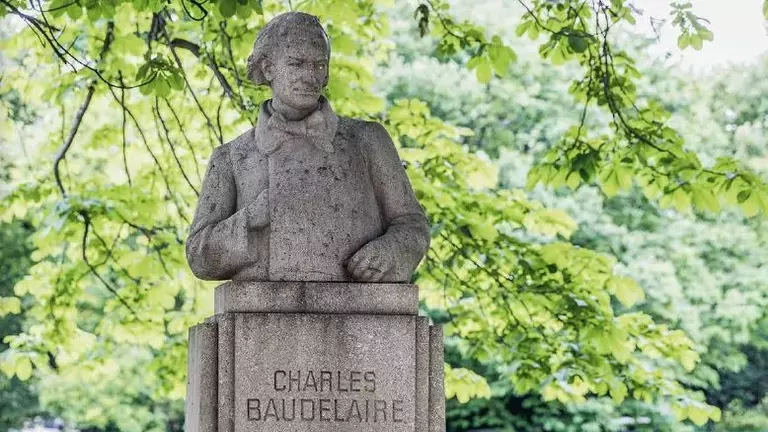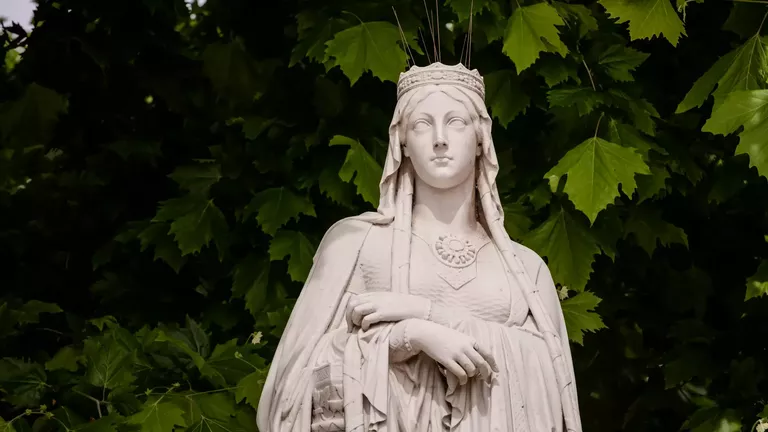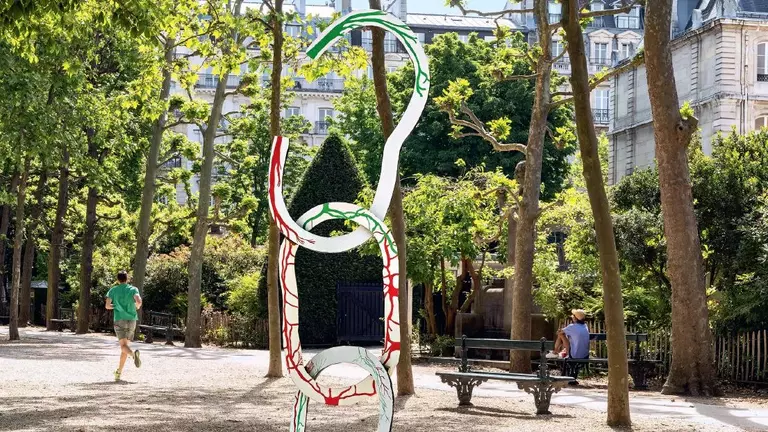As you might expect with so many publishing houses and faculties in the area, writers feature large among the statues that watch over visitors and their reading matter. There’s Verlaine, posed severely at the top of a column, overlooking a parterre of carnations and tulip beds; Baudelaire in the shade of a sweet chestnut tree; and not far from him, José-Maria de Heredia and the Countess of Ségur, watching impassively over the winding avenues of the English garden.
A little further on, you pass former Senate librarian, Leconte de Lisle; George Sand, Stendhal, Flaubert, Sainte-Beuve, Montesquieu and Zweig. Obviously, none of these statues graced Marie de’ Medici’s garden as all of these literary celebrities were born long after her death. Most of the statues in the garden date from the 19th century, representing the artists of the period and symbolising the link between art and the Luxembourg. Alongside writers are the painters Delacroix, Ingres, David, Millet and the musicians Beethoven, Chopin, and Massenet.

Spread across the east and west terraces, the twenty statues that make up the group known as Reines de France et Femmes Illustres (Queens of France and famous women) were commissioned in the 1840s, following a complaint by the Duc Decazes, Grand Referendary of the Chamber of Peers, about the impropriety of the nude statues decorating the garden.
Most of these remarkable women were descended from the reigning aristocracy, the most notable exceptions being Clémence Isaure who at the end of the 15th century revived a poetry competition, founded in Toulouse, known as Les Jeux Floraux; and Laure de Noves, muse of Francesco Petrarca. Executed by various sculptors in the second half of the 19th, century, the statues are essentially academic in style, but the choice of an entirely feminine group was quite a bold move for the period.

Other, more recent works have a political or commemorative significance. One example is the memorial to student resistance fighters by Gaston Watkin (1916-2011) whose pedestal bears this verse from the Chant des partisans (Song of the partisans): “Friend, if you fall, a friend will rise from the shadows to take your place". Another is Le Cri, l’Écrit by Fabrice Hyber (born in 1961) unveiled in 2007 – the place where present and past presidents of the Republic have since gathered at the invitation of the president of the Senate to mark the International Day for the Remembrance of the Slave Trade and its Abolition.
Among the political figures remembered in the gardens is Pierre Mendès France, whose statue has watched over a lawn in the English garden since 1984. Overlooking the Grand Bassin and rather less well known is Auguste Scheurer-Kestner, vice president of the Senate when the Dreyfus scandal broke, and one of the first to declare his support for the unjustly accused captain. All of these works serve as reminders that the garden is more than just a bucolic haven.
